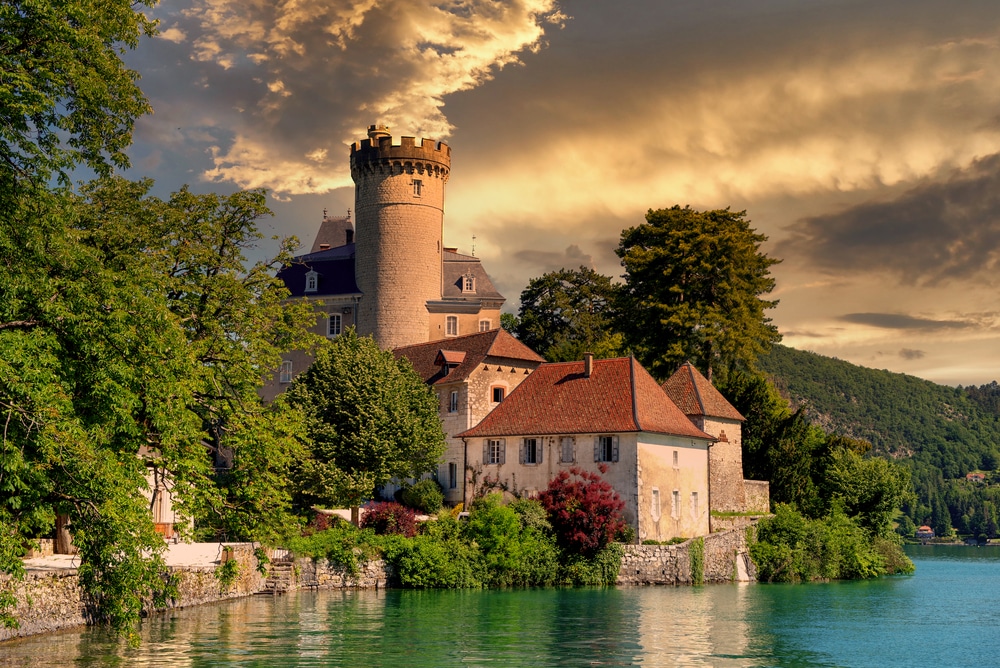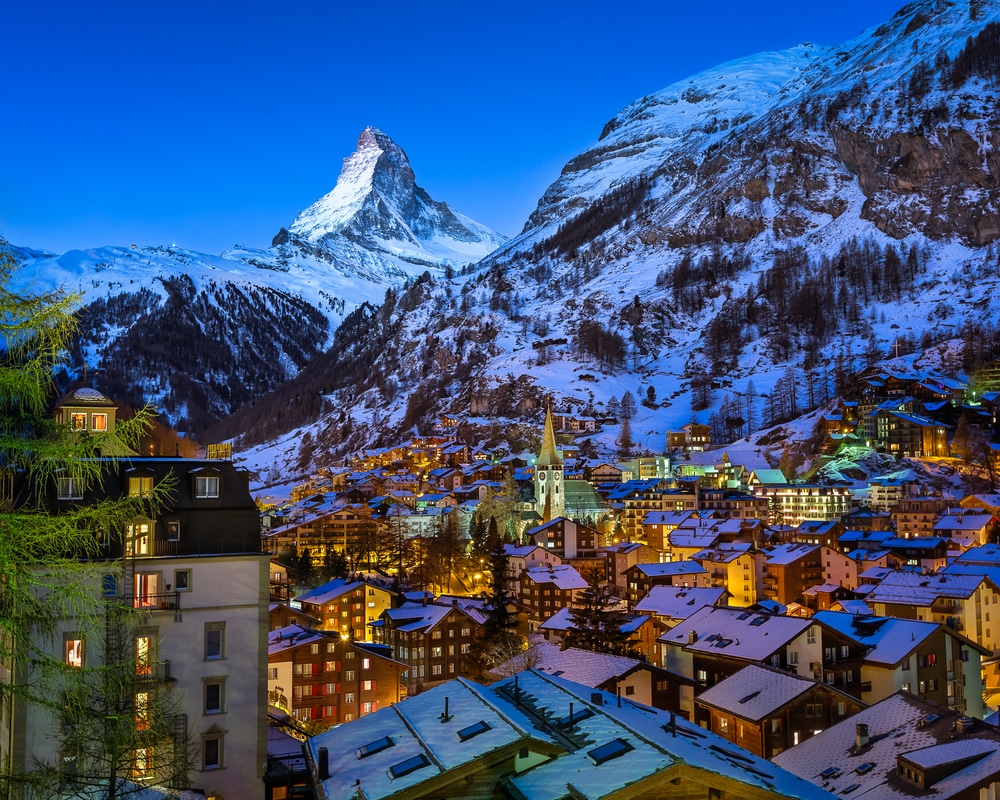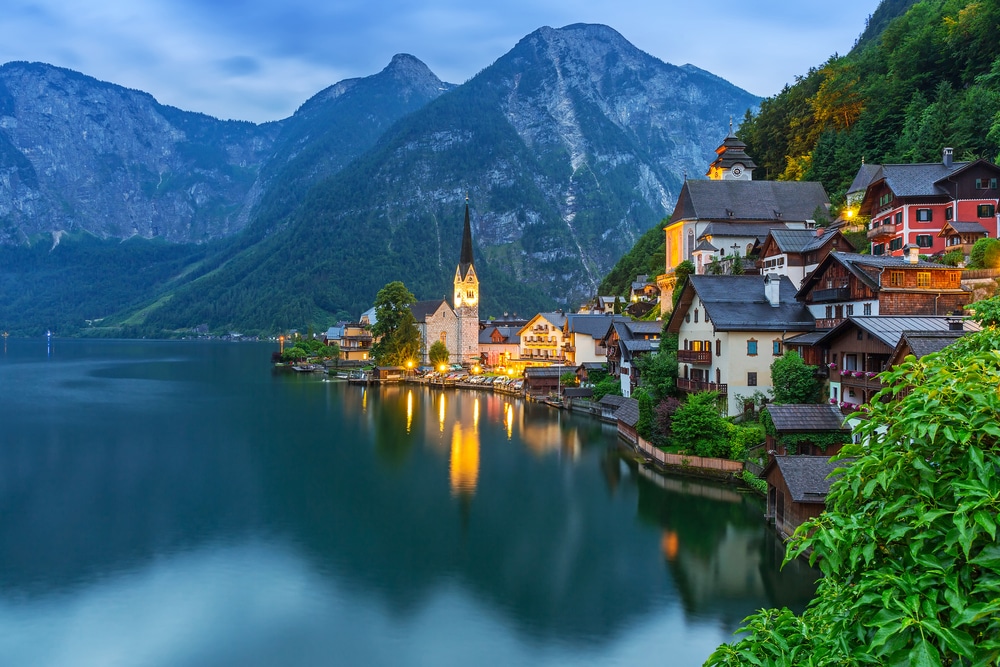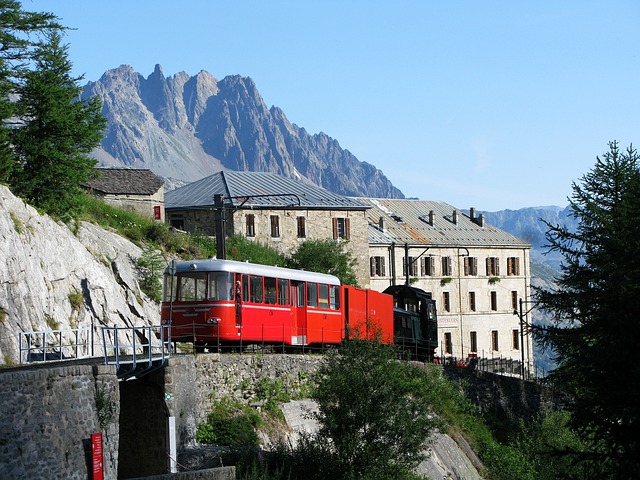Posted on 20 November 2023
When answering which European country has the best Alps, there are clear leaders, depending on your preference. In particular, the Swiss, French, Austrian, and Italian Alps boast world-renowned ski resorts, ski lifts and alpine trails, and are the most popular for investing in ski chalets or apartments. The Alps in these countries make you feel like you have stepped out of the 21st century, however Europe’s crown jewel, is about much more.
Stretching across eight countries, this iconic mountain range weaves alpine lakes, traditional culture, rich biodiversity, and historical stories. Mountain peaks owe their existence to colliding tectonic plates. Approximately 30 million years ago, the African and Eurasian plates converged, giving rise to colossal uplifts we now know. For centuries, they were well-kept secrets, but around the 19th century, people from Europe started to explore more. By the 20th century, tourism began with winter skiing and hiking alpine landscapes in summer. Let’s look at each mountain range in depth, so you can decide for yourself, which is the best.
Which European Country Has the Best Alps?
Facts and Figures about the Alps
- The Alps span approximately 1,200 kilometres (750 miles) across eight countries: France, Switzerland, Italy, Monaco, Liechtenstein, Austria, Germany, and Slovenia.
- Mont Blanc, the Alp’s highest peak, is Western Europe’s highest mountain, and Aletsch Glacier, the Alp’s largest glacier, is a UNESCO World Heritage site.
- The Alps are home to around 13 million people and attract over 120 million tourists annually.
- The Alps play crucial roles in Europe’s hydrology because of major rivers such as the Rhine, Rhone, and Danube.
The Best Alpine Views in France
Nestled in the heart of Europe, the beautiful landscapes of the French Alps, renowned for majestic peaks, beautiful lakes, and traditional villages, offers immersive experiences that transcend the ordinary. Mont Blanc, the crown jewel and highest peak in Western Europe, reigns supreme at 4,810 meters (15,781 feet) above sea level. The snow-clad summit attracts mountaineers seeking challenging ascents and serves as silent sentinels overseeing the expansive Alpine panorama.

Ecological Diversity: As one ascends the slopes, landscapes transition from lush forests of beech, fir, and pine to hardy alpine meadows with wildflowers. Diverse ecosystems provide habitat for wildlife, including ibexes, chamois, marmots, and the elusive lynx, and Vanoise National Park, France’s first national park created in 1963, portrays the commitment to preserving natural heritage. This protected area encompasses glaciers, high-altitude plateaus, and deep valleys, providing refuge for endangered species.
Cultural Heritage: Charming mountain resorts with their ski lift access, traditional chalets, and slate-roofed houses dot landscapes, each telling stories of resilience and adaptation to mountainous terrain. Annecy, Chamonix, and Grenoble are among the towns that blend seamlessly with the natural beauty surrounding them.
Adventure Awaits: For adventure enthusiasts, the French Alps offer playgrounds for all thrill-seekers. The region is perfect for skiing and snowboarding, with world-class resorts such as Chamonix, Courchevel, and Val d’Isère linked by lifts to miles of runs. The Tour du Mont Blanc classic route circumnavigates the Mont Blanc massif. It offers multi-day journeys with unparalleled views and unique cultures.
Aiguille du Midi: Offering a spectacular panorama of Mont Blanc massif, Aiguille du Midi is accessible by cable car lift from Chamonix. The viewing platform, perched at 3,842 meters (12,605 feet), provides 360-degree Alpine views. Beyond its geological significance, Aiguille du Midi accesses serves the expansive Mont Blanc massif, offering launching points for mountaineers embarking on the ascent of Mont Blanc itself. The proximity to Vallée Blanche, one of the longest off-piste ski descents, further cements Aiguille du Midi’s reputation for alpine adventures.
Lake Annecy: Nestled in the Savoie region, Lake Annecy is often called the “Pearl of the French Alps.” Crystal-clear waters, surrounded by picturesque towns and snow-capped peaks, make tranquil escapes for locals and tourists.
- Best skiing areas in France
- Exceptionally good ski resorts in France
Best of the Swiss Alps
The Swiss Alps, a part of the more extensive Alpine Mountain range, includes the sub-ranges of the Pennine Alps and the Bernese Alps, with the Jungfrau region. Awe-inspiring landscapes that grace Switzerland shape iconic peaks like the Matterhorn and the Eiger. Standing proudly at 4,478 meters (14,692 feet), the Matterhorn is perhaps the most recognisable silhouette. Aletsch Glacier, stretching for 23 kilometres, showcases geological forces.

As the altitude increases, landscapes transition to alpine meadows bursting with vibrant wildflowers, creating striking contrasts against snow-capped peaks and lifts. Conservation efforts to preserve biodiversity ensure alpine landscapes remain sanctuaries for flora and fauna, including the elusive Alpine ibex and golden eagle.
Zermatt, at the base of the Matterhorn, and Grindelwald, surrounded by the Eiger, Mönch, and Jungfrau, exemplify the harmonious integration of human settlements with natural landscapes. This alpine landscape boasts fine ski resorts, excellent value ski lift tickets, and car-free villages, including Verbier and Zermatt, surrounded by the tallest peaks and St. Moritz. Surrounded by the iconic Dom Mountain, Switzerland’s tallest mountain, Saas Fee provides an unparalleled backdrop for year-round adventures via the lifts.
The iconic Glacier Express train journey traverses the Swiss Alps and offers unparalleled views of snow-covered peaks and traditional villages. The Swiss Alps also transform into a summer paradise. Hiking trails crisscross the mountains, leading adventurers through alpine forests, past crystalline lakes, and to panoramic viewpoints. With its network of hiking paths and the famous Eiger Trail, the Jungfrau Region offers breathtaking immersions into the European wilderness. Lake Geneva’s shores are also dotted with vineyards, charming towns like Montreux, and the medieval Chillon Castle. (Guide to buying property in the Swiss Alps.)
The Rest of the Alps in Europe
1: Monaco: European Gem by the Sea
While Monaco might be more synonymous with the French Riviera, nestled on the French border, the nearby Maritime Alps provide dramatic backdrops to this tiny principality. The Monaco skyline, with its towering skyscrapers and the historic Prince’s Palace, contrasts sharply with the rugged mountain beauty. Monaco’s proximity makes it an ideal starting point for those exploring alpine resorts extending into France and Italy.
2: Italy: Dolomites and Beyond
Italy plays a pivotal role with its cultural sites and diverse landscapes. The UNESCO Dolomites, belonging to the Southern Limestone Alps, are known for their distinctive jagged peaks and dramatic rock formations. From the Lavaredo Three Peaks to Marmolada, the Dolomites’ highest peak, to Lake Como, Italy’s mountainous offerings are paradise for hikers and climbers.
Cortina d’Ampezzo and Canazei villages exude timeless charm, showcasing blended Italian hospitality and mountain traditions.Beyond the Dolomites, the western Italian Alps are home to magnificent ranges such as the Pennine and Graian Alps. Mont Blanc, shared with France, is the region’s highest peak, offering breathtaking vistas and world-renowned skiing in resorts like Courmayeur.
3: Liechtenstein: European Tranquillity
Nestled between Switzerland and Austria, Liechtenstein is a tiny yet captivating principality. The Rhine Valley, flanked by the Rätikon, Silvretta, and Saminatal Alps, provides Liechtenstein with serene alpine backdrops. The principality attracts hiking and cycling enthusiasts, with trails crisscrossing landscapes, offering beautiful views of the Rhine River and surrounding peaks.
Vaduz, the capital of Liechtenstein, adds cultural dimensions to European experiences. The iconic Vaduz Castle, overlooking the town, portrays the country’s rich history. Liechtenstein’s position showcases how even the smallest nations can embrace and celebrate the grandeur of majestic mountains.
4: Austria: Traditions and Vienna Woods
Austria, synonymous with classical music and imperial architecture, attracts alpine enthusiasts. The Austrian Alps, comprising the Eastern Alps and parts of the Central Alps, offer diverse landscapes, while the Tyrolean Alps, with their postcard-perfect villages like Kitzbühel and St. Anton, attract skiers and snowboarders.

Grossglockner, Austria’s highest peak, and Hohe Tauern National Park provide sanctuaries for European wilderness. But beyond high peaks, Vienna Woods on the eastern fringe offers a contrasting landscape of rolling hills and dense forests, creating picturesque transitions from the mountains to the lowlands. Meanwhile Saalbach is among the world’s most lift-linked ski areas, offering old-world Tyrolean village vibes.
5: Germany: Bavarian Beauty and Zugspitze’s Majesty
In Germany, the Alps grace the southernmost part of the country, primarily in Bavaria. The Bavarian Alps evoke timelessness with their idyllic meadows and storybook villages. Garmisch-Partenkirchen, at the foot of Zugspitze, Germany’s highest peak, is a gateway to European adventures.
Zugspitze, towering at 2,962 meters (9,718 feet), offers panoramic views of the Bavarian and Austrian Alps. The Eibsee, a crystal-clear lake at the base of the Zugspitze, adds to the region’s scenic allure. With their charming alpine architecture and outdoor recreational opportunities, the German Alps provide serene escapes for nature lovers and adventure seekers alike.
6: Slovenia: Julian Alps and Alpine Tranquillity
Slovenia, a hidden gem between Italy, Austria, Hungary, and Croatia, features the northwest Julian Alps. The Triglav National Park, named after Slovenia’s highest peak, Mount Triglav, is a pristine alpine wilderness dotted with glacial lakes, deep gorges, and emerald-green rivers. With its iconic island church and medieval castle, Lake Bled symbolises the country’s alpine beauty.
While lesser-known than their counterparts, the Julian Alps offer a tranquil escape for those seeking solitude amid nature’s grandeur. The Soca Valley, threaded by the emerald Soca River, provides a scenic backdrop for hiking, rafting, and exploring places like Kranjska Gora.
In conclusion, the European country with the best Alps is France or Switzerland; but don’t let this block your choices, when choosing where to buy property. From Monaco’s glamour to the rustic charm of Slovenian villages, each region contributes unique chapters to European stories. Whether it’s jagged Dolomites peaks, the tranquil beauty of Liechtenstein, or the classical allure of the Austrian and German Alps, these diverse landscapes celebrate symbiotic relationships between humanity and majestic mountains.
Glacier Skiing in Europe: Feeling adventurous? The best glacier skiing in Europe, through icy terrains and untouched powdery slopes in mountainous regions, is the most perfect and extraordinary holiday. Glacier skiing refers to skiing on glaciers. Glaciers are large, slow-moving masses of ice and snow that form in areas where more snow accumulates in winter than melts in summer. They are typically found at high altitudes throughout Europe.
Alpine Ski Food: Popular ski foods combine rich, hearty, and comforting flavours, deeply influenced by the Savoie region’s natural abundance and cultural heritage. Dining on alpine food highlights the captivating mountain regions. From traditional Alpine dishes to delicious regional eats, the Alps region is home to mouth-watering cuisine that keeps you coming back for extras.
Ski Capital of the World: For the ultimate mountain experience, the ski capital of the world is delightful Courchevel in the French Alps. This shouldn’t surprise anyone because France is the world’s top skiing destination and during winter, the alps attract skiers from many countries. But Courchevel is next level and a place to be seen. Indeed, should you find yourself with steady cash flows and want to level up your social circles, Courchevel ski resort is where to go in the European Alps.


